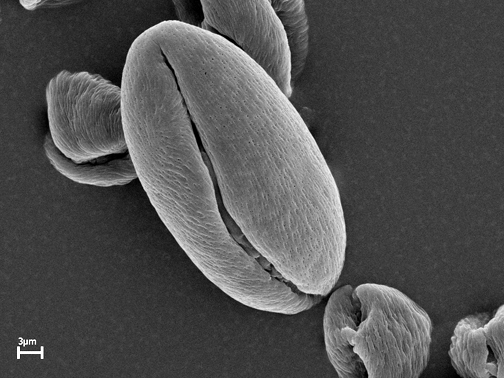| General Description | This species was used as the primary root stalk in Europe for the commercial production of other roses for many years. It can be found in the wild throughout the U.K. and now naturalized in parts of southern Canada and the United States. |
| ID Characteristic | Five pink-white wide petals, spread around a yellow eye growing from a low shrub with dark green serrated leaves.
|
| Shape | Rambling and unkempt. |
| Landscape | Used in Britain as a native, small hedge shrub on farms. They are grown for their colour and scented flowers. Also used more often for its medicinal purposes in North-America. |
| Propagation | Although a two year stratification period is usually required before seed germination, an alternative method has been developed to reduce the propagation time. Placing a scarred seed in moist media for three weeks at a temperature of 27-32°C, then keeping it cool at a temperature of around 3°C for four months should result in germination.
|
| Cultivation | Successful seeding may occur in any soil but the plant prefers sandy conditions. Seeds usually take two years to germinate.
|
| Pests | Relatively pest and disease resistant. Does not succumb to black spot as easily as the more common species of roses.
|
| Habitat | Found in north-west Africa, Asia and Europe as well as throughout most of North America, where it ha |
| Bark/Stem Description | Pale green stems are covered with hooked red thorns which aid in climbing.
|
| Flower/Leaf Bud Description | Long, stiff, green sepals cover the young petals before emergence.
|
| Leaf Description | Compound pinnate leaves. With 5-7 serrated ovate blades. Leaves are dark green in summer fading to a yellowish-brown in autumn.
|
| Flower Description | Pink-white, five petals, hermaphroditic flowers with prominent yellow stamens. Flowers range in size from 3-6 cm and can be used to make a scented jam. |
| Fruit Description | Pollinated flowers swell into 1.5-2 cm red, globose rose hips that are very high in vitamin C.
|
| Colour Description | Petals vary from pink to white with dark yellow stamens. The leaves are dark green and connected to paler stems with red thorns.
|
| Texture Description | Medium texture.
|
.jpg)
